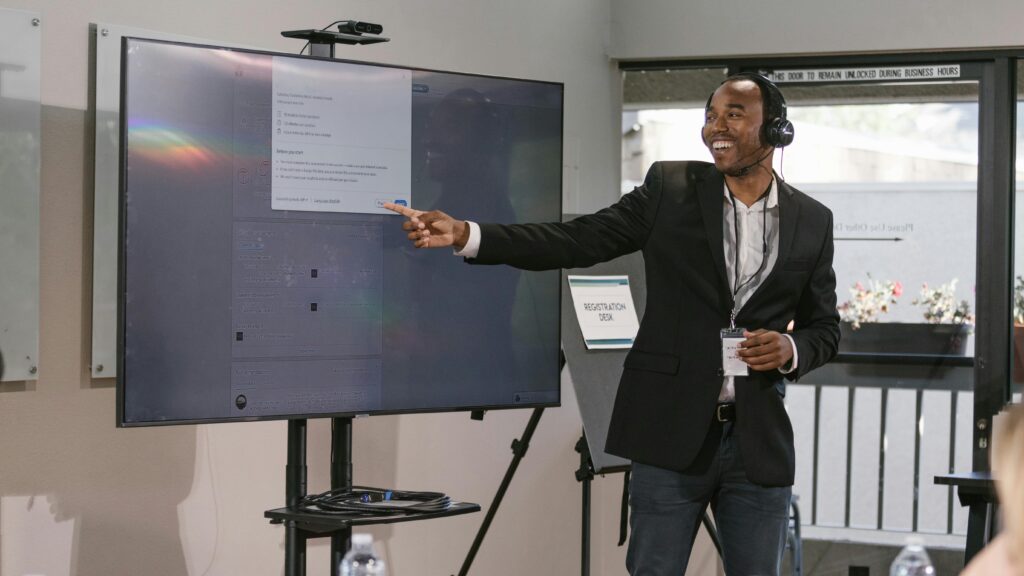Understanding user needs can be challenging. Requirements change, and misunderstandings often lead to costly corrections. That’s why prototyping for validation is so powerful. It transforms abstract ideas into visual models that both developers and customers can evaluate early. This process bridges communication gaps, reduces risk, and improves clarity. In this article, I’ll show how prototyping helps refine requirements, align expectations, and deliver a final product that truly meets user needs.
What is Requirements Engineering?
Requirements engineering focuses on defining, documenting, and maintaining system requirements. It’s a critical phase where developers gather input from stakeholders to shape what the system should do. However, translating user needs into technical specifications isn’t always straightforward. This is where prototyping becomes invaluable.
What is Requirements Validation?
Requirements validation ensures that collected requirements accurately reflect what stakeholders want. It’s about checking for correctness, completeness, and feasibility. Validation helps catch misunderstandings early, preventing costly adjustments later in development.
Prototyping for Validation: The Key Technique
Prototyping primarily supports requirements analysis and validation. It provides a tangible model of the system, making it easier for users and developers to discuss features and limitations. By visualizing concepts, teams can spot gaps, misunderstandings, and conflicting requirements early. This proactive approach reduces costly rework later in the development cycle and strengthens stakeholder confidence. Let’s dive into the two main types of prototyping and see how to apply them.
Throwaway Prototyping
Throwaway prototyping involves building a quick, simplified version of the system. It’s fast, cost-effective, and perfect for identifying poorly understood requirements. After testing the prototype, developers and customers agree on necessary changes. The prototype then gets discarded, and the software requirements specification (SRS) is updated. This process repeats until all requirements are identified and validated.
Key Benefits:
- Accelerates initial feedback collection
- Reduces the risk of developing irrelevant or unwanted features
- Helps clarify ambiguous requirements early
Example: Imagine designing a customer support chatbot. Developers quickly build a basic prototype to test conversation flows. After users test it, feedback reveals missing scenarios, like handling multiple simultaneous queries or integrating with knowledge bases. The team refines the requirements, updates the SRS, and iterates again. This rapid iteration ensures the final chatbot design aligns with user expectations and business goals.
Evolutionary Prototyping
Evolutionary prototyping, on the other hand, continuously refines a working model of the system. Each iteration incorporates feedback, steadily evolving into the final product. This approach works well when requirements are likely to change or grow over time. Developers build a functional prototype, then modify it iteratively based on ongoing user input.
Key Benefits:
- Supports dynamic and evolving requirements
- Encourages continuous user engagement and alignment
- Speeds up time-to-market by delivering usable increments
Example: When building a project management app, developers start with core features like task creation and deadlines. As users test the prototype, they request new features like calendar integration, team collaboration tools, or custom notifications. The prototype evolves with each iteration, shaping a product that aligns closely with user needs while adapting to emerging market demands.
Best Practices for Effective Prototyping:
- Involve stakeholders early and often to gather comprehensive feedback
- Balance speed and detail: avoid over-engineering prototypes, but ensure they capture key interactions
- Use appropriate tools (e.g., Figma, Axure, or low-code platforms) to streamline prototyping efforts
- Document learnings from each iteration to inform future decisions and improve requirement traceability
By integrating prototyping directly into development activities, teams can foster better communication, minimize misunderstandings, and build products that truly match stakeholder expectations. Whether using throwaway or evolutionary prototyping, this technique empowers teams to create user-centric solutions that stand the test of time.
Why Prototyping for Validation Matters
Prototyping reduces ambiguity. It helps developers understand both the positive and negative aspects of requirements. It also allows customers to see their ideas in action, often revealing overlooked needs. The constant feedback loop fosters better communication, strengthening the relationship between developers and customers.
Moreover, experienced developers can use prototypes to uncover hidden requirements. Sometimes users don’t know what they need until they interact with a prototype. By iterating and validating through prototyping, teams can ensure the final product truly meets expectations.
Final Thoughts
In the world of requirements engineering, prototyping for validation is a powerful tool. It minimizes misunderstandings, refines requirements, and ultimately leads to a more successful product. Whether using throwaway or evolutionary prototyping, the key lies in continuous feedback and improvement. If you want to build systems that genuinely satisfy users, make prototyping an essential part of your validation process.
What’s Next?!
Now that you’ve seen how prototyping for validation brings ideas to life and uncovers hidden issues early, it’s time to explore another powerful approach. Different stakeholders often see the same system in unique ways. Curious how to align those perspectives effectively? Continue with my next article — Clarity with Viewpoint Oriented Requirement Validation — and learn how this technique ensures every viewpoint is heard and integrated.
Credits: Photo by RDNE Stock project from Pexels
| More on draw.io |
|---|
| Mastering Cut, Copy, Paste, and Delete in draw.io How to Undo or Redo Editing in draw.io How to Exit draw.io How to Close a Draw.io Diagram How to Print a Draw.io Diagram |




